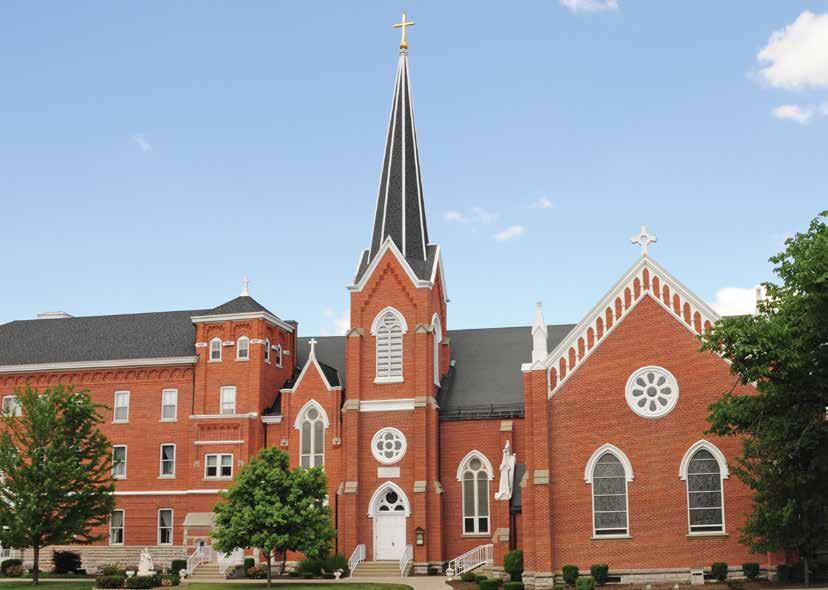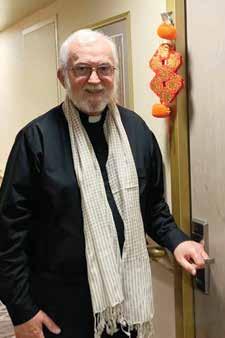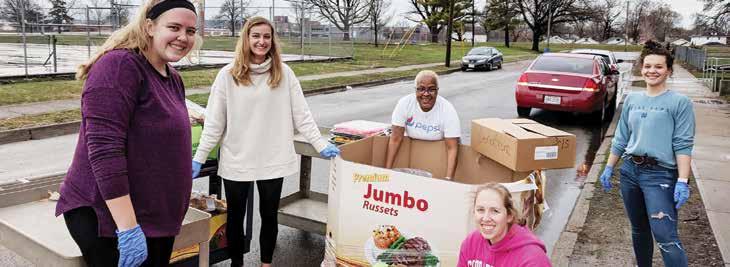
6 minute read
QUESTION OF FAITH
QUESTION OF FAITH HOW DID THE CHURCH RESPOND TO PAST PANDEMICS?
The Church, like humankind in general, has faced challenges posed by disease. And where there has been suffering, Christians have responded, seeking to overcome fear and self-interest to offer spiritual, physical and material support.
Advertisement
COMMITMENT TO CHARITY Based on Jesus’ words and example, the first Christians shared their resources to care for the least among them, including widows, orphans and the poor. But they reached beyond their members, developing the most extensive network of charity that the world has ever known.
Concern for others’ needs grew to include care for their health. Sickness was not well understood and often considered a punishment for sin, but Christians destigmatized sickness as responsibility for the sick and it became recognized as a religious duty. By the Fourth Century, Christian bishops took the lead, founding hospitals and hospices. Basil of Caesarea built a charitable complex (including a hospital) that was so vast that it was nicknamed “the new city.” Some who assisted the bishops formed communities dedicated to charitable works, developing religious orders to nurse the sick, pray with them and assure those who died received a proper burial.
The Christian network of care became more critical during times of pervasive illness. The so-called Plague of Cyprian (named for the bishop who most fully described it and sought to aid its victims) ravished the Roman Empire in the mid-Third Century. While non-Christians fled from their sick friends and family, Christians remained to care for them. Impressed by their witness, many non-Christians who survived the outbreak converted.
SANCTITY OUT OF SUFFERING At times, the magnitude of disease could be overwhelming. During the Black Death in the mid-1300s, at least one-third of Europe fell victim, including many priests and religious who cared for the ill or provided them with the last sacraments. St. Roch, who is frequently invoked against illness, became sick after tending to plague victims. He recovered and continued his ministry. According to some accounts, after making the sign of the cross
Saint Aloysius Gonzaga visited victims of the plague.
over them, many ill persons recovered. Though he did not die of the plague, he became the patron saint of plague sufferers; his saintly intercession was credited with turning back an epidemic in Germany in 1414.
Outbreaks of disease frequently elicited Christian heroism. In the late 16th Century, St. Aloysius Gonzaga, a young Jesuit, visited the victims of the plague at a Roman hospital, continuing to go to the hospital even after his superiors, out of concern for his health, cautioned against it. He contracted the illness and died at age 23. The life of St. Aloysius, known today as the patron of students and caregivers, continues to inspire.
THE COMMON GOOD As modern medicine advanced in the 19th Century, the Church continued to lead, extending healthcare to many underserved communities. Women’s religious communities established and staffed hospitals and clinics, and, during time of pandemic, thousands of additional sisters volunteered to aid the sick, forming a veritable army of caregivers.
With a greater understanding of how to slow the spread of disease, the Church has cooperated with governments that have emphasized canceling events, including religious services. During the 1918 influenza pandemic, numerous U.S. cities forbade large gatherings. Though Mass could not be celebrated publicly, Catholics were encouraged to amplify their prayers and devotions at home as the Church assisted in protecting those in society most vulnerable to illness.
The Church’s response to disease remains motivated by the same concerns: aiding the sick and suffering and serving the common good. Through spiritual assistance and physical care, we, as Catholics, seek to help those impacted by the most recent pandemic, continuing a long tradition dating back to Christianity’s earliest years.
FATHER DAVID ENDRES is associate professor of Church history and historical theology at Mount St. Mary’s Seminary & School of Theology.
CATHOLIC AT HOME HOW TO PRAY AS A COUPLE AND WHY IT’S ESSENTIAL
My friend was a new blushing bride when she suggested to her husband that they start praying together. Daunted by the idea and clueless as to how to go about it, her husband nervously declined, saying that he needed to work on his one-on-one relationship with God before he worked on his relationship with God, his wife and him. Though he, like the rest of us, certainly needed to be attentive to how he related to Christ, what he didn’t realize was that prayer in marriage is paramount to one’s personal holiness as well as the sanctity found within the sacrament itself.
Because I believe in transparency here at “Catholic at Home,” I’ll fully confess that the bride and groom mentioned are my husband and me; and further, I’ll happily report that our anniversary is this month and that, in contrast to our newlywed days, we’ve learned how to pray together in a fruitful and vulnerable way that’s opened our hearts to God’s grace and helped us move mountains. But honestly, none of this is relevant unless we can wrap around minds around why praying as a couple is absolutely crucial to marriage.
BACK TO THE BEGINNING So I’ll go back to my wedding – you go back to yours: Beaming with bliss, you and your beloved just made vows to each other, and, if you look closely, your relationship now resembles the Most Holy Trinity. Just as the love between the Father and the Son begets the Holy Spirit, so the two of you will love each other in a way that is life-giving. From husband and wife comes a family and a contribution to the Church entirely your own. You’re each made in the image and likeness of God, AND, united in sacramental matrimony, together, you’re a new creation in Christ. It’s miraculous and supernatural.
Since your relationship now bears a striking resemblance to God, it’s your job to imitate Him to the best of your ability; to do an impression of Him together. Are you following? Now, have you ever tried to do an impression of someone you hardly know? It doesn’t go over well. Why? Because, in order to offer a good imitation of someone, you have to be in frequent, intimate contact with him/her. As married couples, we have to be in touch with the Lord together in order to do a good impression of Him for each other and for those in our lives. This means we have to speak with Him and to Him together.
HOW TO START? But sometimes, not everyone is on board with praying as a couple. It’s not the most comfortable of ideas if you’re unfamiliar with it, and many of us grew up without seeing joint prayer in action. Regardless of each spouse’s ease, the very first step is a simple invitation. Asking, “Will you pray with me?” at the beginning of the day (or any time) demonstrates a desire for communion among the two of you and God.
One of the most frequent questions I hear is “What if my spouse doesn’t want to?” and to that I say: Keep inviting charitably. Don’t force, just ask. Whatever the answer, proceed in prayer either as a couple or on your own. Your words don’t have to be elaborate or long, just honest. A simple, “Lord, help us to see each other as you see us,” or “Give us the grace to serve each other,” covers plenty of ground with few words.
Next month, I’ll share some powerful forms of couple prayer that range from “short-n-sweet” to vulnerable and deep. In the meantime, inviting our spouses to pray is one of the best ways to express our love and affection; it demonstrates hope and love for their souls as well as confidence in the one Whose image we bear together.
KATIE SCIBA is a national speaker and Catholic Press Awardwinning columnist. Katie and her husband Andrew have been married for 11 years and are blessed with six children.









